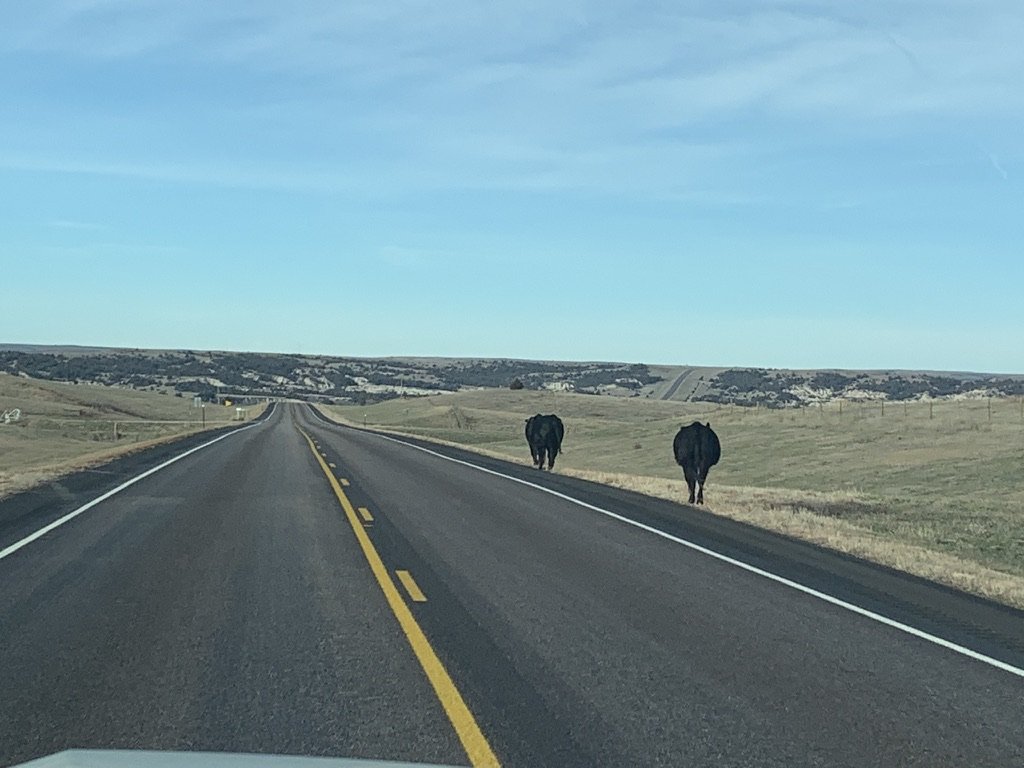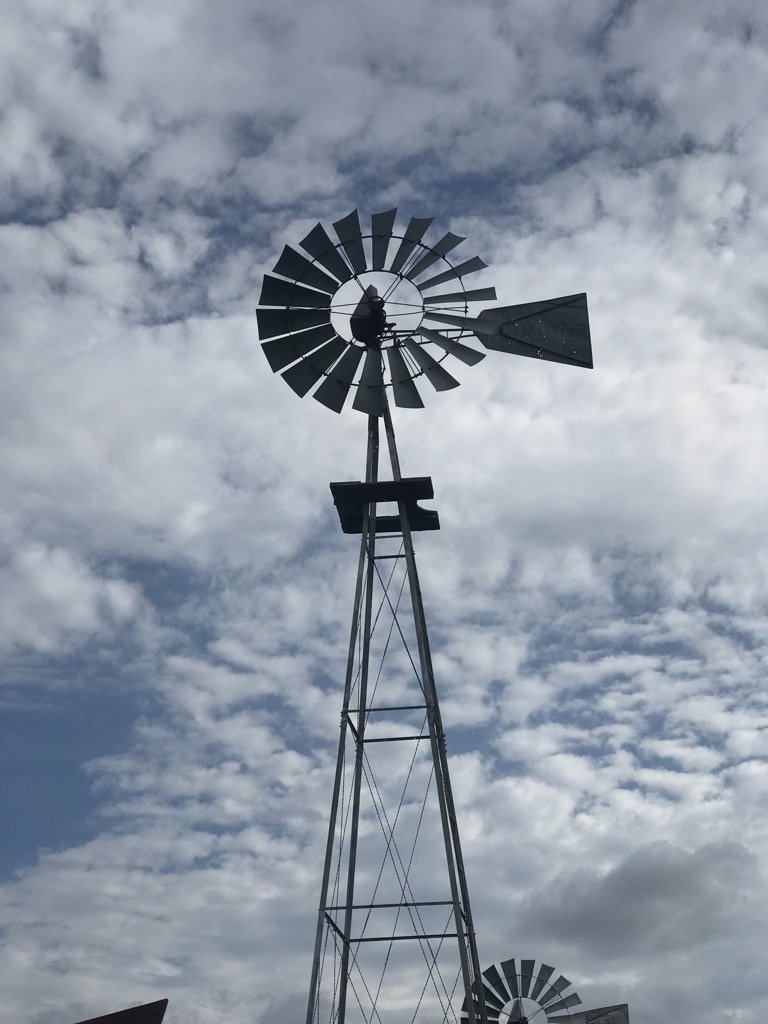Low-Cost Transportation and Geo-arbitrage in Rural America
While we are primarily nomadic, we did purchase a small home in the Great Plains to serve as our home base between travels in early retirement. Moving to a rural area drastically reduced our cost of living. We’ve also come to prefer the slower and quieter pace of rural life between our travels.
One of the challenges of living in a rural area as a one-used-car household is the reduced availability of public and private transportation. As we dug deeper into the resources available for transportation, we were pleasantly surprised to find options that complement a rural and nomadic lifestyle.
Sleuthing out low-cost transportation in rural areas was not easy. Depending upon who’s responsible for communicating about rural transportation in your area (or the area you are researching to live), your search may be easier or more difficult than ours.
Before relocating to a rural area in early retirement, we recommend investigating the rural transportation options available.
About Us
Darren and I are early retirees who left corporate careers in our late 40s. We are nomadic except for three months a year when we spend time in our tiny home in the Great Plains of the United States.
We spend 40 - 120 days per year thru-hiking in the EU and about 90 days per year in the Caribbean and Central America. This blog documents our journey to nomadic living, shares tips and advice for financial independence, and details the adjustments we’ve made to make this semi-nomadic lifestyle work.
Our website is ad-free; however, we use Amazon affiliate links for some of our recommendations. We make a small affiliate commission whenever you use these links at no additional cost.
Thanks for supporting our little blog!
What is Geo-arbitrage?
Geo-arbitrage is taking advantage of differences in living costs between different geographic areas to improve one’s financial situation. Geo-arbitrage is often embraced by people in the FIRE (financial independence retire early) community. Relocating to a less expensive area lowers expenses, including housing, taxes, education, and sometimes healthcare. Geo-arbitrage offers the ability to stretch a household budget.
Geo-arbitrage can have some trade-offs for early retirees and FIRE enthusiasts. When relocating to a rural area, you’ll need consider the changes awaiting you:
Adapting to a new culture
Locating new services and amenities, like education and transportation
Changing or ending a career
Moving a small business
What Attracts Early Retirees to Rural Areas?
Early retirees may choose to move to rural areas for various reasons. However, the main reasons are peaceful living, lower cost of living, access to nature, outdoor activities, a sense of community, and health benefits from a more physically active outdoor lifestyle. Often, rural areas have much more to offer than people realize. In fact, people who have lived in large urban areas for a long time may find that living in a rural area is a fresh breath of air.
What is Rural Transportation?
The United States Department of Agriculture (USDA) defines “rural” as an urban cluster of at least 2,500 people but less than 50,000. Additionally, rural areas consist of open countryside with population densities of less than 500 people per square mile and places with fewer than 2,500 people.
In America’s history, rural transportation has included transit by foot, boat, horseback, wagon, steamboat, train, bicycle, plane, and automobile.
Today, rural transportation comprises of
Roads (dirt, gravel, and paved)
Personal vehicles (cars, trucks, and motorcycles)
Public transportation (demand-response transportation, dial-a-ride, scheduled routes)
Private transportation (Uber, Lyft, taxi)
Bicycles and walking
Air transportation (airplanes, small airports, landing strips, commercial air service)
How Do I Find Rural Transportation?
The first place to find information on rural transportation is on the internet or through local, word-of-mouth knowledge.
Honestly, many rural residents and realtors may not know of rural transportation options, so you may get frustrated early in your search for rural transportation. If realtors and casual contacts are not fruitful in your transportation search, check with local bars/breweries and restaurants that sell beer or liquor, as they have a need of connecting locals with transportation on occasion.
Additionally, find your local Area Agency on Aging. We were surprised to learn that resources for aging are also available to the general public. After living in a rural area for a few months per year, we see that resources for older adults also come in handy for local businesses, travelers, caregivers, and younger residents with acute or chronic illnesses.
And last, if your search with your local Area Agency for Aging, bar, or restaurant does not yield results, check with state transportation resources. Here are a few examples to get you started:
Kansas network is here
Nebraska options are here
Oklahoma’s interactive transit site is here
South Dakota’s interactive rural transit site is here
Don’t find your state listed here? Just search in your favorite search engine for “rural transit near me” or “is there public transportation in <insert your state>.
How Much Does Rural Transportation Cost Users?
We’ve found that the cost of rural transportation increases based on a few key factors:
Miles from pick-up to destination
Number of passengers
Fixed or on-demand pick-up and drop-off locations
We’ve managed to find transportation options as low as $2.00 for pick up/drop off between two cities (or, points pre-fixed by the transportation company) 60 miles apart. However, we’re not often going to fixed points when we travel. We’re typically traveling to small and mid-sized airports within 1-3 hours of our tiny home.
Connecting to MCI from Northeast Kansas
View from the North East Kansas Area Agency on Aging Transportation office.
Many services provided by your Area Agency on Aging can be used by anyone in the community, not just older adults.
To travel from my sister’s house in Northeast Kansas to the new MCI airport, it’s a 77-mile one-way commute, which is $172 each way with Uber! When I checked with North East Kansas Area Agency on Aging Transportation (NEKAA), the cost was $45.00 per person each way, a savings of over 50%.
What we liked about NEKAA was the ability to book days or months in advance, the friendly driver, the large van, and the front-door pick-up and drop-off. This enables us to leave our vehicle with family and not at the airport.
Connecting to SLN from Northcentral Kansas
Through OKKC connection, we can get transport from our tiny home to SLN airport for $67 each way (72 miles), compared to $131.00 each way with Uber. From Salina, one can fly nonstop to Denver and Chicago. This will be a great option if we need to travel separately and connect with family in Colorado.
Connecting to MHK from Northcentral Kansas
As Kansas State University alumni, we enjoy living under an hour from our old stomping grounds. We’ve found that the neighboring county (Clay County) is attracting a lot of early retirees, with easy access to the college town of Manhattan, Kansas.
Unfortunately, connecting from Clay County to the MHK airport requires one to be a resident of the county. So if you live outside of Clay County, Kansas, you cannot use the county services to access the MHK airport.
What Are the Current Challenges with Rural Transportation?
In general, transportation infrastructure in rural areas of the United States tends to be less developed than in urban areas due to lower population density, limited funding, limited utilization of available funding, and other factors. Also, rural areas are typically not serviced reliably by on-demand transportation services like taxis, Uber and Lyft.
With limited transportation options in rural areas, many residents incur the expense of an additional vehicle or rely on friends or family living nearby to transport them.
What is Changing in Rural Transportation?
Ride-sharing services like Uber and Lyft have helped bring transportation to those within 30 minutes of an urban center. However, these on-demand services can come with hefty price tags.
The most significant change in rural transportation in the past two decades has been the development of shuttle van (or bus) services, making it easier for residents to access jobs and amenities in nearby towns and cities. In other areas, the development of ride-sharing services has provided more transportation options for residents who may not have access to a personal vehicle.
Who Pays for Improving Rural Transportation?
Improving rural transportation can be complex and is typically seen as a shared responsibility among the government, private companies, and other stakeholders.
Non-profit organizations increasingly play a role in improving rural transportation. These groups may advocate for transportation infrastructure investments or provide funding and support for public transportation services.
The U.S. Department of Agriculture (USDA) does provide funding for various programs that support rural transportation infrastructure and services. Additionally, the USDA provides funding for the Rural Business-Cooperative Service, which supports the development of rural businesses, including transportation-related businesses such as trucking and logistics companies. This can help improve transportation services in rural areas by increasing the availability of private-sector transportation options.
Aging agencies, also known as Area Agencies on Aging (AAAs), are typically funded through federal, state, and local government sources, as well as private donations and grants.
Rural Transportation Helps Rural Residents
Rural transportation options, like on-demand and scheduled van/shuttle services, help all rural residents. These transportation services:
Provide access to healthcare
Offer employment opportunities
Help residents engaged in social activities
Encourage participation in recreational activities
Aid in caregiving responsibilities
More access to rural transportation provides rural residents with access to necessary activities that enable safety and security. Better transportation also contributes to aspirational goals like nurturing relationships with far-flung friends and family, self-development and personal growth, and self-actualization and acheiving goals.
Rural Transportation, In Summary
Improving rural transportation is vital to ensuring that rural residents have access to essential services such as healthcare, education, and employment opportunities, as well as to support economic growth in rural areas.
We’ve been surprised at the options available here in North Central Kansas to access regional airports for about half the price of Uber and Lyft. It’s nice to know that our transportation is booked and not reliant on family/friends and the random availability of drivers on an app.
Yes, rural transport can pick you up here.
After talking to our drivers, we better understand the importance that rural transportation plays in meeting basic needs and aspirational needs of the rural community. Rural transportation was first intended to get people to medical facilities and to work, however the utilization of services in not limited only to basic needs.
In addition to meeting basic needs, rural transportation can also meet the aspirational needs of community members by fostering:
Love and belonging—connecting rural residents with far-flung friends and loved ones through airport access
Esteem—participating in the greater world and sharing in the freedom, strength-building, and self-esteem building that travel can foster
Self-actualization—becoming the most that one can be
We look forward to future positive changes in rural transportation options that enable geo-arbitrage in rural America.


